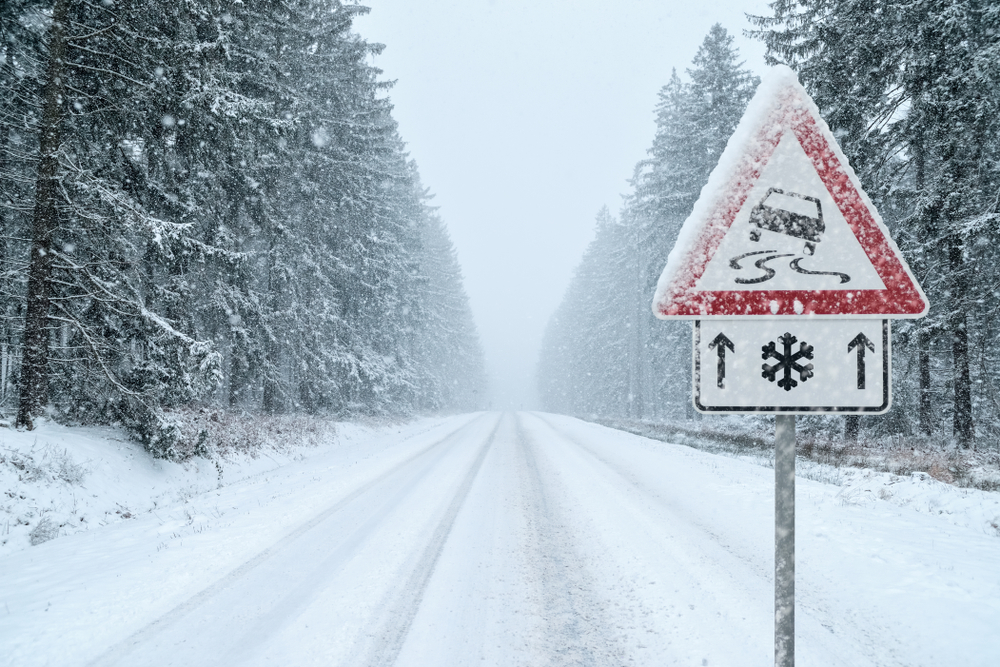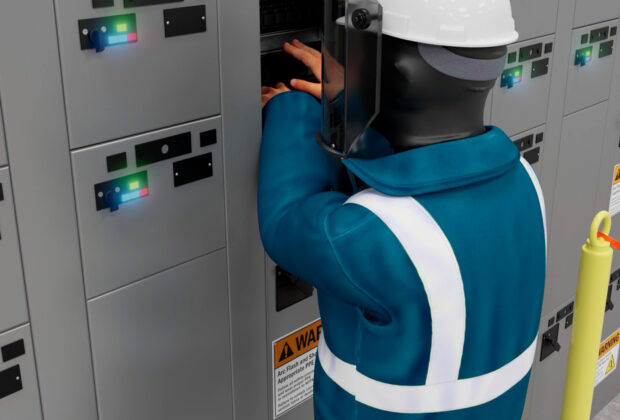Defensive driving is important all year long, but especially in the winter where snow and ice can make driving conditions more dangerous than in the warmer months. Many industries and jobs rely on employees driving, from transporting goods to getting from job site to job site. Defensive driving skills, from winter driving fundamentals to reforming your mindset surrounding the fundamentals of safe driving, can save time, money, and lives. Driver safety starts with ensuring your vehicle is safe before you drive, alertness on the road, and knowing how to execute defensive driving skills effectively.
1. Check your vehicle before driving
Driving in the winter when the roads have snow and ice on them poses its challenges, but before you start driving, it’s important to make sure that your vehicle is ready for the road.
The main items you should check before driving are:
Electrical
When it’s cold outside, your car battery might become sluggish or not be able to provide sufficient power so your vehicle can start properly. One way to counteract the strain that cold weather causes to your battery is to install a block heater and plug your vehicle into an electrical source when it isn’t running. Typically, you should plug in your vehicle when the weather is below -15°C.
Brakes
Worn out brakes and winter driving don’t mix. There are a few ways to know if your brakes need attention. The first way is if you’ve heard squealing or screeching noises regularly when braking, that could be an indicator that your brakes need to be checked. You can also visually check your brake pads by looking through the holes on the wheel disc (the middle part of the wheel rim) of each wheel on your vehicle. You should see your brake pad compressed against your brake rotor. If the pad is less than 3mm thick, a professional brake inspection is a good idea.
Tires
Driving on worn-out tires is never safe, and that’s especially true in winter. One easy way to tell if your tires may need replacing is to check the grooved lines that run between the tread of your tires. If these grooves are smooth with the tread, then chances are the tire should be replaced. The exact tread measurement for an end-of-life tire in Canada is 1.6mm. An easy method for measuring the grooves is to use a quarter. Insert the edge of the quarter into the groove with the queen’s head upside down and facing you. If the top of the queen’s head is completely visible, it’s time to replace the tire.
Car fluids
Things like windshield washer fluid, oil, and coolant should all be checked in your vehicle regularly. It’s important to remember that not all windshield washer fluids can withstand super cold temperatures, so if you have summer windshield washer fluid left over, be sure to use it all up before it gets too cold. Windshield washer fluid that is rated for –40°C is ideal for the winter months in Canada.
Fuel
It’s important to keep your gas tank topped up. If you’re driving long distances or in bad weather, it could be more difficult to refuel when you need to. A good rule of thumb is to try to always keep the gas tank at least half full.
2. Clear snow and debris from your vehicle
Winter often means snowfall, and the buildup of snow and ice on your vehicle needs to be removed before you drive. It can be tempting to hope that your vehicle will warm, and snow and ice will melt as you drive but consider that loose snow and ice flying off your vehicle at high speeds can cause visibility and safety issues for others on the road as well. Most provinces, like Ontario, for instance, have legislation in place where you can be fined if you fail to adequately clear the snow and ice off your vehicle. Also, a license plate obstructed with snow can be cause for a fine as well.
3. Be alert and slow down
Snow and ice on the road mean that driving at higher speeds can be dangerous. Everything takes a bit longer in the winter, from stopping to reaching your destination. Driving at higher speeds in the winter means you have less control of your vehicle if you suddenly need to brake or turn, increasing the chance that you’ll get into an accident.
Some general things to remember when driving in the winter are:
- In inclement weather, give yourself extra time to reach your destination or delay the trip if possible.
- Consider driving with your low-beam headlights on. Doing this means your taillights will also be activated, increasing your vehicle’s visibility.
- Ensure that there’s extra distance between you and the vehicle in front of you. Remember that stopping time on an icy road is double than on a dry one.
- If you start to skid while braking, remain calm, take your foot off the brake, look to where you want your vehicle to go, and steer in that direction.
- Be aware of bridges, as the surface of bridges can be icier versus roads.
4. Lengthen the distance between vehicles
One fact of winter driving is that it takes longer for your vehicle to stop on icy roads. Winter tires may reduce this time, but it is still important to lengthen the distance between yourself and the vehicle in front of you. For instance, a vehicle traveling at 60 km/h takes about 45 meters (140 ft) to stop on a dry road but could take 80 meters (over 260 ft) to stop on an icy road surface.

5. Invest in winter tires
Are winter tires worth it? In a lot of cases, yes, they are. Winter tires provide better traction on ice and snow than all-seasons as they are designed to stay flexible in colder temperatures, while all-season tires harden in colder temperatures which reduces traction. In some provinces, British Columbia and Quebec, winter tires are mandatory. In Manitoba, you can get a loan to help cover the costs involved with buying and installing winter tires, and in Ontario, you can enjoy lower insurance premiums if you install winter tires on your vehicle during the colder season.
Driving in the winter
Driving in the winter months is a distinct experience versus driving in the summer. When there are snow and ice on the road, you need to be more aware of your surroundings and be able to anticipate and react accordingly to inclement weather and driving conditions. Whether you drive for a living or drive casually, it is important to understand the differences between driving in the winter versus driving in the summer and adjust your perception while you drive to match the road conditions.




Comments are closed.